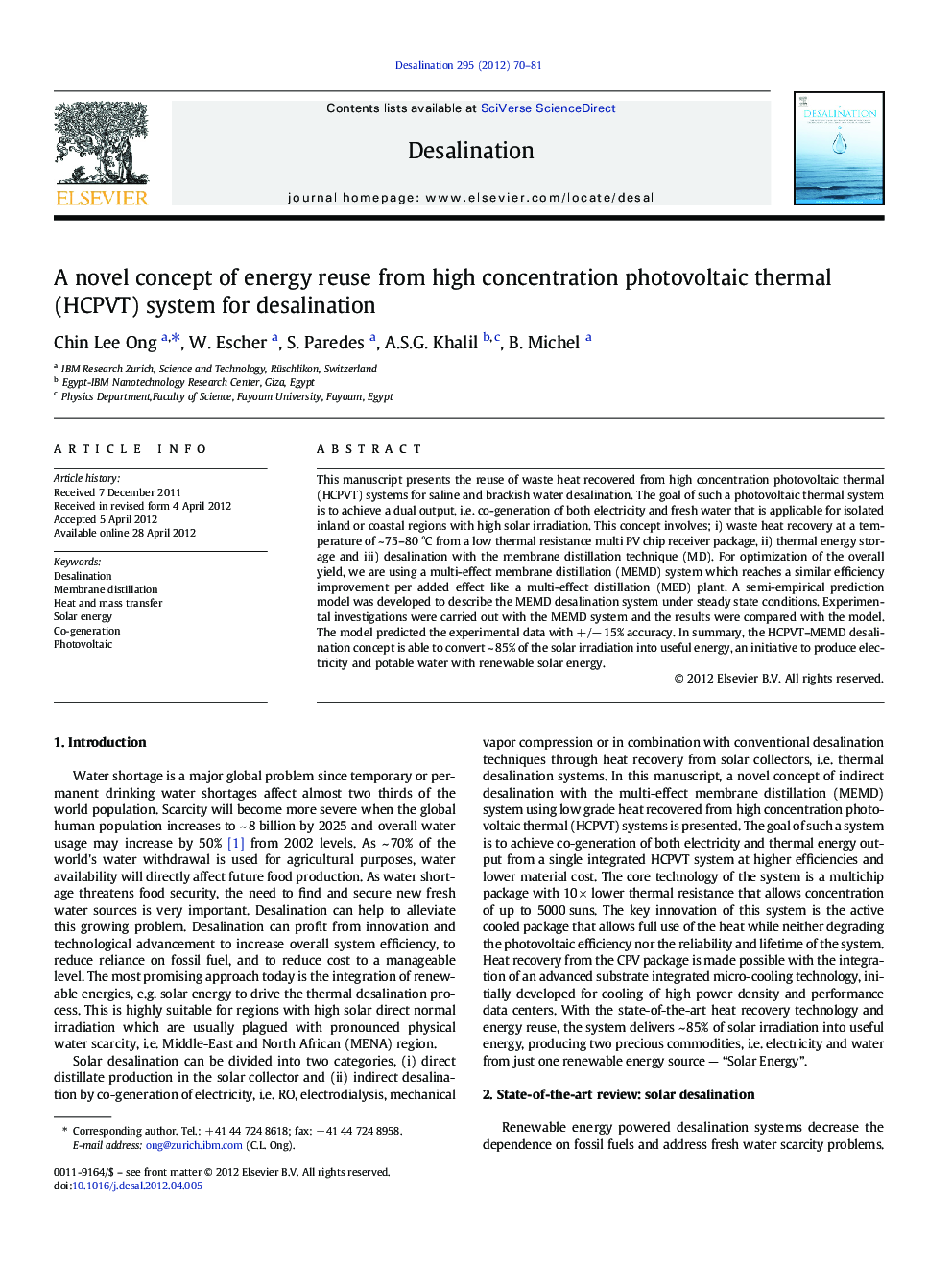| Article ID | Journal | Published Year | Pages | File Type |
|---|---|---|---|---|
| 624346 | Desalination | 2012 | 12 Pages |
This manuscript presents the reuse of waste heat recovered from high concentration photovoltaic thermal (HCPVT) systems for saline and brackish water desalination. The goal of such a photovoltaic thermal system is to achieve a dual output, i.e. co-generation of both electricity and fresh water that is applicable for isolated inland or coastal regions with high solar irradiation. This concept involves; i) waste heat recovery at a temperature of ~ 75–80 °C from a low thermal resistance multi PV chip receiver package, ii) thermal energy storage and iii) desalination with the membrane distillation technique (MD). For optimization of the overall yield, we are using a multi-effect membrane distillation (MEMD) system which reaches a similar efficiency improvement per added effect like a multi-effect distillation (MED) plant. A semi-empirical prediction model was developed to describe the MEMD desalination system under steady state conditions. Experimental investigations were carried out with the MEMD system and the results were compared with the model. The model predicted the experimental data with +/− 15% accuracy. In summary, the HCPVT–MEMD desalination concept is able to convert ~ 85% of the solar irradiation into useful energy, an initiative to produce electricity and potable water with renewable solar energy.
► Waste heat reuse from high concentration photovoltaic thermal systems for desalination. ► A novel solution to link renewable energy sources and water. ► The photovoltaic thermal system co-generates electricity and fresh water. ► The HCPVT–MEMD concept converts ~ 85% of the solar irradiation into useful energy. ► A novel semi-empirical model was developed for performance prediction and design.
